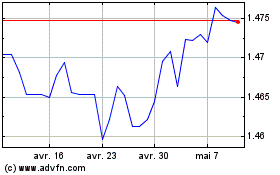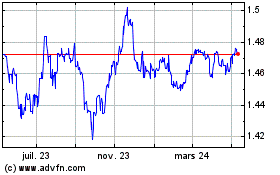Canadian Dollar Falls As Jobless Rate Rises
09 Octobre 2015 - 11:47AM
RTTF2
The Canadian dollar turned negative on Friday, after data showed
that Canada's jobless rate rose unexpectedly in September, as the
number of people looking for jobs increased.
Data from Statistics Canada showed that the jobless rate rose
7.1 percent in September from 7 percent last month. Economists has
been expecting the jobless rate to fall to 6.9 percent.
The economy created 12,100 jobs in September, almost unchanged
from last month's increase of 12,000 jobs. The figure beat
forecasts for a gain of 10,000 jobs.
Meanwhile, oil prices rose amid a weaker dollar and on
expectations for dwindling global supplies.
Crude for November delivery rose $0.41 to $49.84 a barrel.
The loonie was trading mixed in the European session. While the
loonie advanced against the yen and the greenback, it weakened
against the euro and the aussie.
In early New York deals, the loonie declined to 1.4749 against
the euro, reversing from its early 2-day high of 1.4618. If the
loonie extends fall, it may challenge support around the 1.49
mark.
The loonie, having advanced to a 2-1/2-month high of 1.2901
against the greenback at 6:35 am ET, reversed direction with the
pair trading at 1.2980. The loonie is seen finding support around
the 1.305 level.
The loonie weakened to 0.9509 against the aussie, its lowest
since September 21. The next possible support for the loonie may be
found around the 0.96 region.
The loonie eased back to 92.62 against the yen, after climbing
to a 1-1/2-month high of 93.26 at 6:35 am ET. Further weakness may
take the loonie to a support around the 91.00 mark.
Looking ahead, U.S. wholesale inventories for August are slated
for release shortly.
Euro vs CAD (FX:EURCAD)
Graphique Historique de la Devise
De Mar 2024 à Avr 2024

Euro vs CAD (FX:EURCAD)
Graphique Historique de la Devise
De Avr 2023 à Avr 2024
